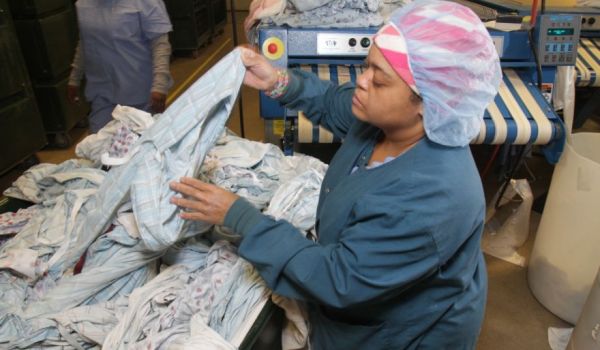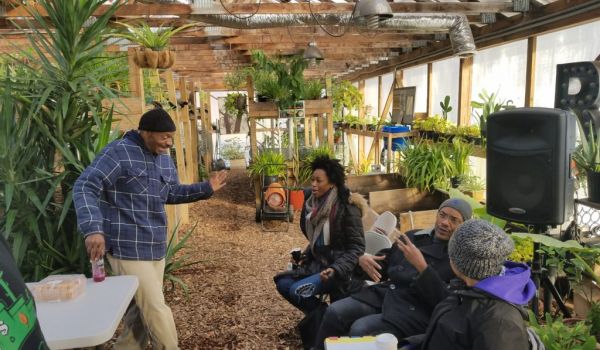The following is an excerpt from City by City: Dispatches from the American Metropolis, a collection of essays on American cities, written by the people who live in them. City by City is edited by Keith Gessen and Stephen Squibb, and published by n +1.
Gar Alperovitz is a historian, political economist, activist, and writer. He has written many books, including The Decision to Use the Atomic Bomb, and, more recently, What Then Must We Do? Straight Talk About the Next American Revolution. He grew up in Racine, Wisconsin, and has contributed to numerous efforts at economic reconstruction, including in Youngstown and Cleveland, Ohio. All of which he discussed with n+1.
n+1: How are American cities, north or south, different from European ones?
GA: I think the really big difference between European and American city politics is that here, if you’re corporate, you can pull the rug out from under the cities all across the continent. In the global market you can move around, and in the American market you can move around.
But it’s different in Europe. I once was at a Brookings Institution seminar. And some guy from Germany was saying, “America, it’s wonderful. You can just get up and move, and the workers will take it. In Germany, we can’t do that; there’s no place really to go. In America, they play the different regions off against each other. You just move the game.”
The term I use now is “throwaway cities”—Cleveland, Detroit, of course. I mean it’s brutal, because it’s not only corporate policy. The U.S. has such an unconsolidated social democratic system: liberalism is so weak that corporations encounter very little constraint. Also, transportation policy is pitifully weak as it relates to city policy. A few weeks ago, I had to go to Cleveland for a meeting from Washington, D.C. The airfare was $850. You can’t do business very well if transportation costs that much.
n+1: Huge transaction—
GA: Yes. Amazing. And the same thing in Cincinnati. There’s no attempt to coordinate the development of transportation policy and city policy. And furthermore there’s nobody with power in the city who gives a damn. By pulling transportation out of the city as has happened with some airlines in Cincinnati—or making it costly as in both Cleveland and Cincinnati—they’re making it so expensive that you can’t run a large business in the city. It isn’t quite so bad in European countries, where there is an attempt to stabilize with regional policy, as they call it, and to coordinate it with transportation policy.
n+1: So what you’re describing then is that, for lack of a better term, the mode of distribution in Europe is smaller—
GA: Scale matters. This is historian William Appleman Williams’s influence, because he made me think about it in a way I hadn’t before. The founding fathers—especially Madison—understood that if you spread people you can divide them, you can conquer them. That’s straight Madison. Federalist No. 10 also says explicitly that power is based on who owns the wealth. And the problem from Madison’s point of view is to spread out those people who want to take the wealth. So we spread them out around the continent. And expand. We divide and conquer.
In the United States, you can drop Germany into Montana. People don’t realize the scale that we live in; the same thing that goes on in the global empire is being done in the continent. They just keep sprinkling jobs and moving them around. So it’s a very difficult system—very different. There’s no other place quite like this in the advanced world.
n+1: What can cities do?
GA: Some cities still have a political structure that can tax, and allocations can be used for interesting purposes. More important, many of the larger cities established universities and health systems during the era of industrial development. And these institutions are anchored—they don’t get up and move—and are actually channels for a lot of public money.
They also have populations that are under intense pressure, so there’s the possibility of different politics, and you can begin to generate models that are essentially quasi-socialist models. Not around state ownership, but around more complex communities/worker structures. In Cleveland, for instance, an integrated group of large-scale worker cooperatives and other firms are in part supported by the purchasing power of hospitals and universities that, in turn, have a good deal of public funding.
It’s also a model that in many cases is workable, politically, but one that also introduces entirely different principles. I’m as interested in what principles such models teach as in the terms of the models themselves. This is a country with little socialist tradition in the modern era. So it doesn’t know that changing the ownership of capital is important. It matters who owns capital, and this idea is not widely understood. It’s not an idea in the times, and it’s not even an idea in the culture. How do you introduce the notion that common ownership and democratic ownership is an important principle in the political economy in such a culture?
In cities it can be done. Cities can do that. In real-life terms. Not bullshit terms. Not ideology.
n+1: How do you understand this term “ideology”?
GA: The term that’s most interesting would be the German term Weltanschauung, the encompassing understanding, which is part ideas, part values, part theory. That which tells us where it is we stand and how we are proceeding in the world. Ideology is the ground on which people come to that question. And in terms of future American politics, unless we begin to build that in a way that coheres with a concrete political strategy and a concrete institutional strategy, we lose.
n+1: What is the Cleveland Model?
GA: The idea is to set up an institution, not a corporation, but something else, within a geographic community. And then on that structure you build worker-owned and multi-stakeholder firms that cannot be sold off, which is critical. This means that any growth that happens is distributed more equally because everybody collectively and individually owns a piece of the asset whose value is appreciating, whose revenue is growing.
Then you’ve got these anchor institutions I was talking about earlier: hospitals and universities—Case Western, Cleveland Clinic, University Hospitals. Medicare, Medicaid, education efforts—lots of public money in the area: Those three Cleveland institutions alone purchase $3 billion in goods and services a year. That’s leaving aside salaries and construction—just what they buy. And, until now, none of it from that area. So the model directs some of that purchasing power to the multi-stakeholder firms and co-ops.
Now, these are not your traditional small-scale co-ops. The model draws heavily on the experience of the Mondragon Cooperative Corporation in the Basque Country of Spain, the world’s most successful large-scale cooperative effort, which now employs around eighty thousand workers in more than 250 high-tech, industrial, service, construction, financial, and other largely cooperatively owned businesses.
In Cleveland now, there are three such firms. The Evergreen Cooperative Laundry [ECL] is the flagship, and it capitalizes on the expanding demand for laundry services from the health-care sector, which is huge, something like 18 percent of the national GDP and growing. After a six-month initial “probationary” period, employees begin to buy into the co-op through payroll deductions of fifty cents an hour over three years (for a total of $3,000). Employee-owners build an equity stake in the business over time—a potentially substantial amount of money in a tough neighborhood. Also, it’s totally green, with the smallest carbon footprint of any industrial-scale laundry in northeast Ohio. Most industrial-scale laundries use four to five gallons of water per pound of laundry; ECL uses eight-tenths of a gallon to do the same job.
The second employee-owned enterprise is Evergreen Energy Solutions, which does large-scale solar panel installations on the roofs of the city’s largest nonprofit health, education, and municipal buildings—again, those anchor institutions I was talking about.
The third enterprise is Green City Growers, which operates a year-round hydroponic food production greenhouse in the midst of the Glendale neighborhood in east Cleveland. The 230,000-square-foot greenhouse—larger than the average Walmart superstore—will be producing more than three million heads of fresh lettuce and nearly half a million pounds of (highly profitable) basil and other herbs a year.
There is also significant support from local foundations, banks, and the municipal government. The Evergreen Cooperative Development Fund, initially capitalized by $5 million in grants, expects to raise another $10–$12 million—which in turn will leverage up to an additional $40 million in investment funds. So, for example, the fund invested $1.3 million in the Evergreen Cooperative Laundry, which was then used to access an additional $4.2 million in financing, a ratio of over three to one.
An important aspect of the strategy is that each of the Evergreen cooperatives is obligated to pay 10 percent of its pretax profits back into the fund to help seed the development of new jobs through additional co-ops. Thus, each business has a commitment to its workers (through living-wage jobs, affordable health benefits, and asset accumulation) and to the general community (by creating businesses that can provide stability to neighborhoods). It is community reconstructive, sustainable, and democratic. So that’s what’s going on. And it’s very difficult to do. As of my last reading, all three are in the black or in line to be in the black shortly.
This experiment was totally top-down. However, it’s a demonstration that the model works, and it gives people something that’s practical. Small-business men see it as positive. Why? Because it helps the local market, people are working hard, they’re getting a piece of the action, it’s not welfare, it’s constructive, it’s practical. No rhetoric. And it gives the mayor another option when corporations come around asking for something. Most important, it introduces the democratization of wealth, and it introduces a planning model. That is, a quasi-planning model in that the market is stabilized by quasi-public—hospital and university—procurement. And that’s very interesting, because you could do essentially the same thing at scale with, say, national mass-transit production when the next General Motors goes down.
n+1: Parts of it sound like the theory of competitive advantage: this city has these anchor institutions, and these other cities have these other anchor institutions. So what about those cities without anchor institutions?
GA: Any large system has a lot more of these than you think. Hospitals are significant, they’re a very large part of the economy, the health-care systems, the university systems, they’re always around. If you also throw in utilities, which also can’t move, museums and city government, those are also anchor institutions, you’d be surprised. And you have a multiplier—one dollar spent leads to another dollar spent and so forth—and if you can expand the multiplier, you’d be surprised by how much stability you could build in to most cities.
n+1: What is it that allowed this to happen in Cleveland? Is this possible in cities undergoing rapid gentrification?
GA: In highly gentrified cities this is not going to happen. There the question is whether or not gentrification will continue. There’s some fragmentary new data that’s suggesting that it’s slowing down—if not reversing—but in cities where the gentry is moving in, young people, people without families, you just don’t have the political economic preconditions to attempt something like this. Nor is it is going to solve the problem of affordable housing in gentrifying areas.
Though the economics of the model make sense anywhere, the politics are, at this stage, only possible in places like Cleveland. The question is whether or not politics can build these new ideas into larger systems down the road. At this stage, we’re introducing elements, not solutions. And in many cities you can begin to see a whole set of ideas shift. It’s been extraordinary. Two or three years ago, the word “worker-owned co-op” was regarded as ridiculous.
n+1: It’s heartening.
GA: It’s heartening, but there are no other options left. We must democratize. The pain will just continue. Period. It just gets worse, and worse, and worse and worse. And if democratization of wealth is a possibility, it’s going to start small. So that’s how you get your co-ops.
That’s a premise I’ve been working with for many years. It’s interesting to see it pop, and I think it’s over-popped, because now people think worker ownership in a worker-owned co-op is the answer. It’s not an answer. It’s an element of an answer. Worker-guild socialism develops competitive worker-owned companies in a culture of competition, not a culture of cooperation or socialism. And it is appropriate in some cases. But that’s not what the Cleveland Model’s about—certainly not at this stage.
n+1: Is there a role for traditional political or labor conflict at this stage?
GA: You know, that model—labor against corporations to get unions—is a dead-end model now. Liberal strategy has always largely depended for serious policy change on the political strength of organized labor, and labor unions have dwindled from 35.4 percent of the labor force organized to 11.3 percent now, with only 6.7 percent in the private sector. I think we need to try to hold the line as best we can. I’m not against labor unions in that respect; indeed, I am a strong supporter. But their power is decaying right before your eyes. If the name of the game is systemic change, then the introduction of a different thematic and different structural principles is critical at this stage.
The horror story in the back of my mind is always Russia in the late nineteenth century. The Narodniks were looking at a vaguely similar problem when the Russian peasants exploded. Enormous conflict. But they didn’t know where they were going in any serious and widely understood programmatic sense. And then they got killed. We may see explosions and not know what to do. There’s already a lot of conflict, but it has no other goal other than “Stop the pain” or “Give us a break.” It doesn’t have a direction. So how do we generate that direction both in ideology and also in learning enough on the ground so we actually know something? So we ultimately can propose and demand something real!
n+1: What happened in Youngstown?
GA: Youngstown was fortuitous. It was the first major plant closing in modern American history. Or at least the first one that got major publicity. Five thousand people lost their jobs. It was national news. September 1977. Big news, national. Now it happens all the time; it’s not news.
The steelworkers, a couple of them—there was the Sadlowski movement, which was an activist steel movement in Gary, Indiana, and there were some activists in Youngstown too—and they were saying, “Let’s take over this mill,” and “Why can’t we run it?” And a deeply concerned ecumenical coalition got together and also said, “What are we going to do?” This was a really big crisis in the community.
At the time, I had been doing a lot of Left-liberal economics. I was a public figure. On Meet the Press and in The New York Times, et cetera, I was everybody’s Left-liberal-Left economist, supported by labor, environmental groups, consumers, black organizations, et cetera. I was doing something with the press all the time. The point is people in Youngstown knew of me, and so they called me: “Would you come and try to help?” And I said, “Yes, of course.” And I helped them shape the idea that they could go forward with a worker-community ownership model. Just buy the plant and run it as a community. And second, I urged that if we dramatized it nationally—politically dramatized it, get the national religious coalitions and so forth behind it—it could be a big enough story that they might very well pull it off. And even if you didn’t pull it off— this is what I liked about them—you would at least spread the idea. Which they did. So they asked me to do it, and I was able to help them get a significant grant from an assistant secretary of HUD who was willing to take a risk and financed a very, very, very professional top-of-the-line study on how to do it. So they had it nailed. And then it was a matter of politics.
So the community mobilized, there was revenue, people set up “Save Our Valley” accounts, they mobilized the national religious community, they mobilized the press, it was a big story in the press, very exciting. And much more important than all of that, the Mahoning Valley, in which Youngstown is situated, had given Carter the state of Ohio. So they had muscle, too. And the Carter administration pledged $100 or $200 million in loan guarantees to do it. And we had the study by the top guy in the steel industry, so it was a viable study. Then the election of 1978 occurred, and after the congressional election, the Carter administration disappeared. So the money disappeared—not really a surprise.
What was really interesting about Youngstown was that they understood that that might happen. And they saw their mission— partly the religious guys—as spreading the word, which was important for other futures. Somebody in Ohio—a wonderful professor named John Logue—set up a little Kent State University institute, and you now find a lot of worker-owned companies that came out of that. And you find a lot of activists still inspired. Barack Obama was hired in Chicago for the first time by such people. Somebody’s doing a biography of Obama who told me that.
What you notice, if you think about this as a political economist, is that steelworkers are now the strongest proponents of worker-owned companies.
n+1: So where is Youngstown today? It’s shrinking—
GA: Definitely!
n+1: Radically.
GA: It’s a Detroit.
n+1: It’s happening in Detroit too.
GA: If you accept the larger argument that stagnation, rather than collapse, rather than boom, is the economic context we’re living in, you have to ask why. Why stagnation, in this context, rather than collapse?
Political organizing in a context of stagnation is very different from the political organizing predicting collapse. The question to ask about any of these shrinking towns is, where did the people go? Nobody asks. They had to go somewhere.

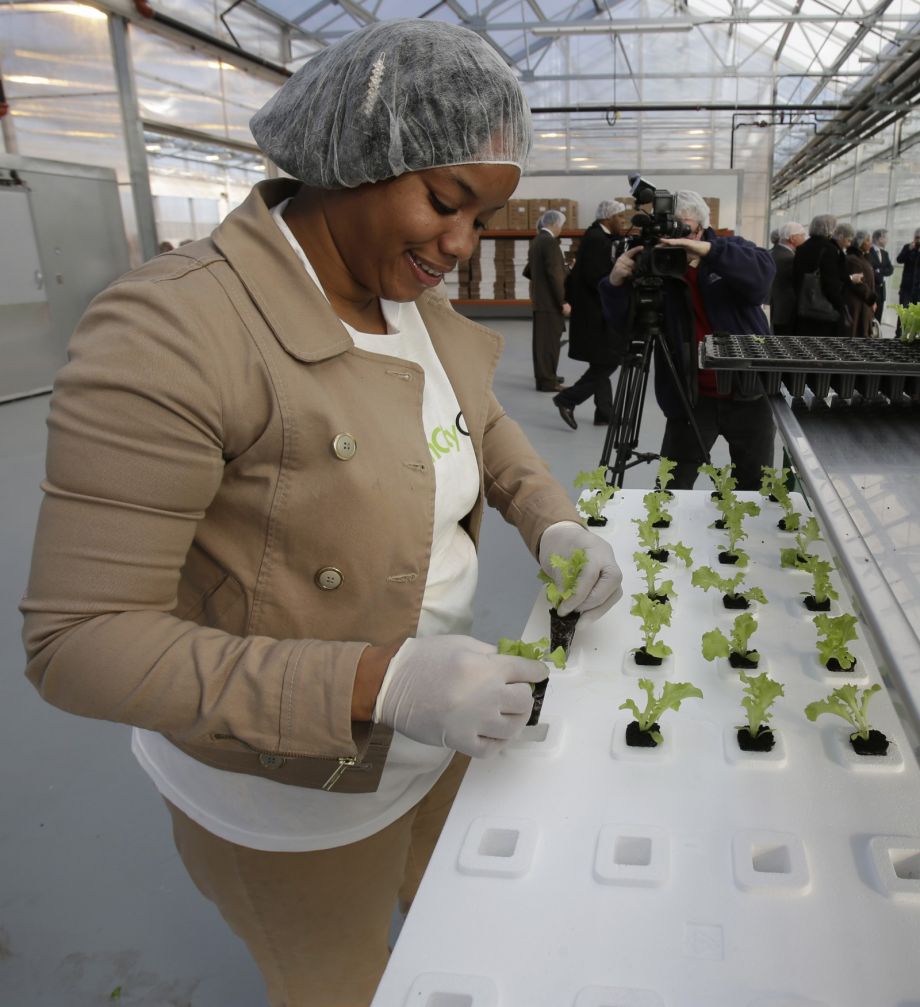
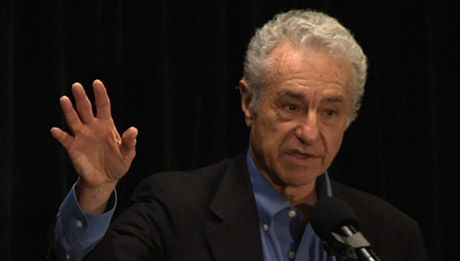




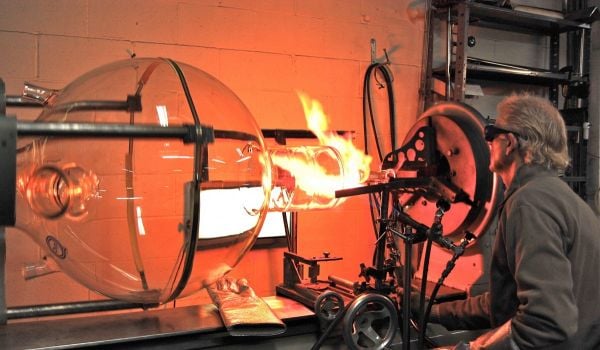
__Sean_Corrigan_from_Cleveland_Sews_(center)__and_Paula_Coggins_from_Oh_Sew_Powerful_(right)_sew_leftover_banners_from_the_NFL_Draft_into_handbags_-_photo_by_Sophie_Kannberg_600_350_80_s_c1.jpeg)

